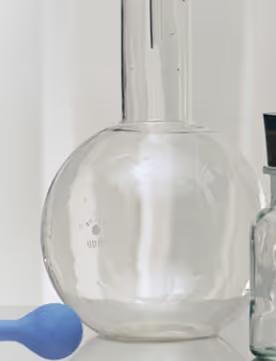Reader Note: Although this article discusses natural antibiotic remedies, it is always important to consult with your health care provider before starting any new herbal supplements or medications. This article is not meant to replace a detailed evaluation and treatment plan.
Several antimicrobial treatments that have been commonly used for hundreds of years are currently under medical review. As studies continue, researchers are finding scientific bases for some of these traditional remedies. Best of all, many natural antibiotics work in ways that make it unlikely pathogens will develop resistance to them.
Read on to learn about 13 natural infection-fighting remedies, and why you might be able to swap your medicine cabinet for your pantry.
What Are Natural Antibiotics?
Natural antibiotics are a diverse set of bioactive natural chemicals that can kill or inhibit the growth of other living organisms. In contrast to synthetic drugs, natural antibiotics are found in plants. A number of plants produce natural antimicrobials that inhibit the growth of fungi and bacteria. (Source)
13 Natural Antibiotics
Garlic
Garlic is a culinary and medicinal powerhouse and is renowned for its antifungal, anti-inflammatory, and antibacterial properties. Garlic contains a number of active sulfur-containing compounds that have powerful medicinal properties, including allicin and ajoenes. In addition to lowering blood pressure and cholesterol levels, garlic has been shown to reduce the risk of cardiovascular disease, boost the immune system, and even protect the digestive system. (Source, Source)
Compounds found in garlic have been shown to be active against bacteria such as methicillin-resistant Staphylococcus aureus (MRSA) and Heliobacter pylori, as well as fungi such as Aspergillus niger and Candida albicans. (Source, Source, Source)

Goldenseal
A member of the Ranunculaceae family, goldenseal (Hydrastis canadensis) is a perennial herb that is native to the eastern half of the United States. While goldenseal is sometimes consumed as a tea or a supplement, it is also used topically for the treatment of rashes and other skin problems. Some of the most common microbial infections treated with this herb include eye inflammation, respiratory tract infections, and sore gums. (Source)
Goldenseal root has often been used medicinally due to its higher concentration of the alkaloid berberine, but research has found that the parts of the plant that grow above ground contain not just berberine but other compounds that work together with it to enhance its antibacterial action. So far scientific studies of goldenseal have focused on identifying its active components and have been limited to in vitro, or lab-based, studies; more research is needed into its effects in vivo, or in living organisms. (Source, Source)
Clove Oil
Cloves are the aromatic dried flower buds of the clove tree (Syzygium aromaticum), an evergreen in the myrtle family that is native to the Maluku Islands in Indonesia. Traditionally used in Chinese and Ayurvedic medicine, clove oil is perhaps best known as a remedy for oral conditions, including providing relief for toothache and fighting infections such as periodontal disease. Clove essential oils and extracts also work well to prevent food spoilage and increase the shelf life of foods. (Source, Source)
In a study exploring the antifungal activity of several essential oils, researchers found that clove oil had the most broad-spectrum effects. The oil derived from the clove bud is 70% to 90% eugenol, which gives clove oil its antimicrobial properties. While research has found eugenol to be generally safe for topical use, it could be toxic if ingested and should be used with care. (Source, Source)
Oregano
Oregano (Origanum vulgare), a perennial, herbaceous flowering plant that belongs to the mint family, is descended from a species native to the Mediterranean region. One of the most pungent herbs in the world, oregano boasts a wide range of medicinal uses that take advantage of its antibacterial properties.
Carvacrol and thymol have been identified as oregano’s antimicrobial components. In a review of studies, researchers suggested that oregano showed strong antimicrobial activity against Staphylococcus bacteria, including the hard-to-treat S. aureus, although its mechanism of action is still being explored. (Source, Source, Source)
Echinacea
Echinacea, a member of the daisy family, is a potent immune system booster with a long history of medicinal use by Native American people. Derived from the fresh or dried roots of Echinacea purpurea, this medicinal herb is still widely used by herbalists today to treat infections, colds and flu, and a range of other ailments. (Source)
Echinacea is believed to modulate the immune system by stimulating the production of white blood cells and suppressing the inflammatory response to bacteria and viruses. Among other organisms, researchers found Legionella pneumophila, associated with Legionnaires’ disease and occasionally more severe cases of pneumonia, is very sensitive to echinacea, and the herb can inhibit the growth of proinflammatory cytokines. (Source)
It should be noted that because of its purported effect on immune function, use of echinacea is not recommended for use by those with autoimmune conditions. Additionally, like other plants in its family, echinacea can stimulate allergic reactions that may be severe. (Source, Source)

.avif)
%20(1).avif)
%20(1).avif)

.avif)












.avif)

%2520(1).avif)


